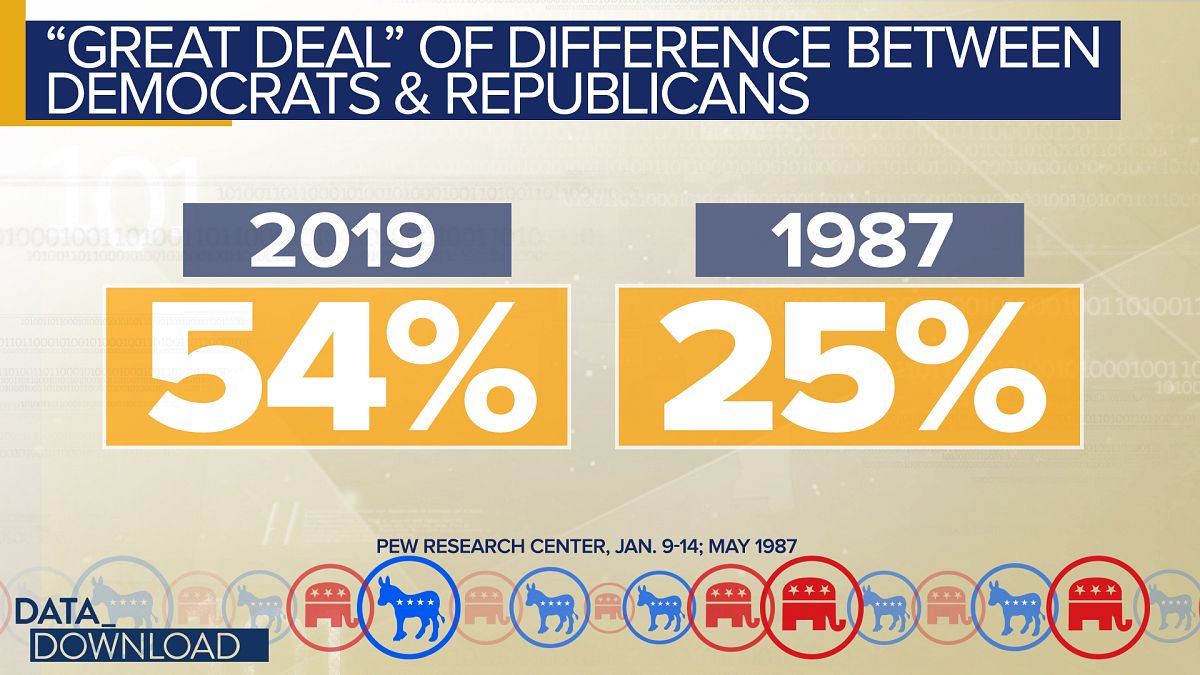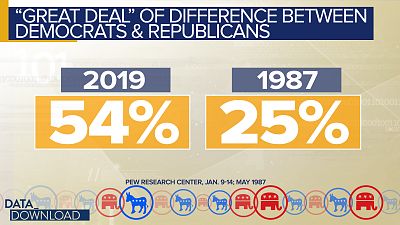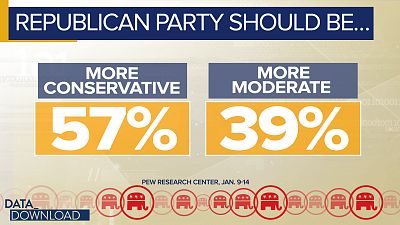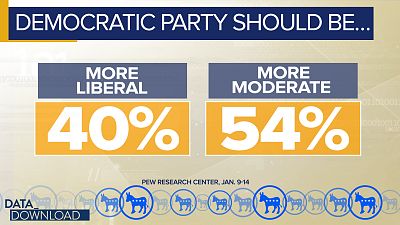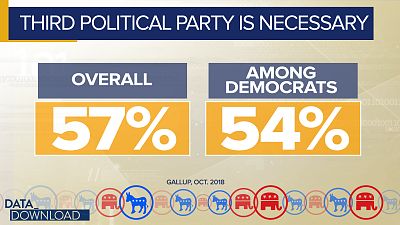In 1987, only 25 percent said there was "a great deal" of difference in what the Democratic and Republican parties stood for.
WASHINGTON - For many years, American voters complained that politics often boiled down to a bland choice between two nearly interchangeable products - Brand D and Brand R. Not anymore. A new Pew Research Center poll shows that the majority of Americans, 54 percent, believe there is "a great deal" of difference in the core beliefs of Democratic and Republican parties.
The survey marks the first time the figure has climbed that high and the move may have important meaning for the 2020 presidential race.
The shift over time has been remarkable. In May of 1987, when Pew first asked the question, only 25 percent of those surveyed said there was "a great deal" of difference in what the Democratic and Republican parties stood for. Just as many people believed there was "hardly any" difference between the two parties.
Flash forward to this January and not only is the "great deal" number more than 50 percent, the "hardly any" number has dropped to just 13 percent.
A look at the trend lines shows the perception of a divide between the parties has been growing steadily over time. The "great deal" of difference number was in the 30s in the last decade, and in the 40s since 2010. But the recent spike is especially sharp.
Before the 2016 election, the "great deal" number was only at 45 percent - nine points lower than it is today. That movement suggests that President Donald Trump is driving at least some of the perceptions on this issue.
The data also suggest Democrats and Republicans have different feelings about the split between the parties.
That same survey found that self-described Republicans would like the party to move further away from the Democrats and the political middle. More than 50 percent of them said they would like to see the GOP become more conservative.
The "more conservative" number for January of 2019 was 57 percent among Republicans, compared to 39 percent who said they would like to see the party become more moderate. And those numbers have been fairly stable since 2008.
Democrats, on the other hand, seem to prefer that the party moves back to the middle. Only four in 10 Democrats say they want to see the party become "more liberal," while 54 percent said they would like to see a direction for the party that is "more moderate."
The numbers over time show the Democrats have moved a little more in favor of the "more liberal" direction since 2008, but the lean toward favoring "more moderate" party overall has been consistent in that time.
Still, the main finding in the data, that the two major political parties in the United States are viewed as very different entities, raises a question as 2020 approaches: Does the movement mean there is room between the Democrats and Republicans for a third party candidacy?
That's a question on a lot of minds this week after former Starbucks CEO Howard Schultz declared he is considering a run for president, and polling data from Gallup suggests the answer may be yes - at least in theory.
Numbers from October 2018 showed that 57 percent of Americans believe "a third major party is needed" in politics to adequately represent the people. Among Democrats, 54 percent were in favor of a third party. The figure was much lower with Republicans, only 38 percent were for a third party.
Taken together, the numbers offer some hints about what may be ahead in 2020.
Voters should probably expect President Trump to hold fast to the formula that has carried him through his time in office thus far and perhaps tack a little further to the right. There does not appear to be a lot of appetite for moderation among Republicans, which may lessen the likelihood of a challenge from a candidate who represents more of the middle of the party.
As for the Democrats, while there have been a lot of words and a lot of airtime devoted to the party's leftward lurch, the majority of the party faithful seems ready for a more centrist candidate. There also seems to be a large chunk of Democrats willing to look outside the party if they find the right person.
